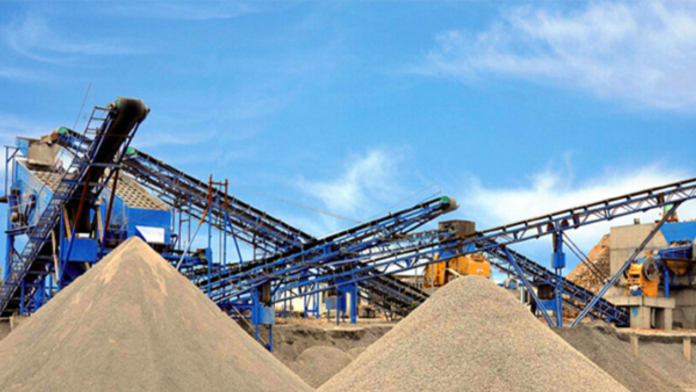The construction sector uses sand to produce high-performing concrete mortar and asphalt products. As natural sand supplies disappear through excessive mining and environmental threats, people increasingly want artificial sand, known as M-sand. Sand production machines help us deliver desired amounts of manufactured sand from multiple sources. Knowing the inner workings of these machines benefits everyone who depends on artificial sand production.
The Role of Sand Manufacturing Machines in Artificial Sand Production
Once rocks and stones are crushed into small particles, we create artificial sand. Thanks to its uniform shape and purer composition, artificial sand produces better results than natural sand while providing greater grading precision. The unique traits of manufactured sand make it perfect for construction projects and the creation of strong concrete mixtures.
Sand production equipment performs essential functions in making this superior material. These machines transform granite, basalt, and limestone into usable construction aggregates through effective transformation. Manufactured sand demand continues to rise throughout multiple industries as companies use it to make concrete and asphalt mixes.
Key Components of a Sand Manufacturing Machine
A sand manufacturing machine contains distinct elements that perform their specific sand-making functions. These machine parts team up to break and transform raw materials into finished sand products.
- Jaw Crusher: A jaw crusher initiates the essential crushing process. It makes big rocks smaller through a mechanical method for easier control.
- Cone Crusher: During its processing stage, the cone crusher transforms product material into smaller segments.
- VSI Sand Make: The VSI sand maker completes the final product shaping and fine-crushing work. The equipment throws the material against a hard surface at speed to create fine, uniform sand particles.
- Vibrating Screen: After crushing, the material flows through a vibrating screen, which divides particles according to their size. The system chooses particles that fit inside its defined size range for further processing.
- Sand Washers: Wheel and spiral sand washers help clean crushed materials by eliminating dust, clay, and other unwanted particles. High-quality aggregates depend on clean sand as input material.
- Belt Conveyors: Belt conveyors move materials between different production phases of the sand factory to keep the process running at full speed.
The Sand Manufacturing Machine Functions Through Several Stages
A sand production system converts raw materials into finished sand through specific processing steps.
- Feeding the Raw Materials: Our production begins by placing granite or river pebbles into the jaw crusher.
- Primary and Secondary Crushing: The jaw crusher handles raw materials before passing them to the cone crusher for secondary crushing. Our system shrinks the raw material to match size requirements.
- Material Grading: A vibrating screen sorts the crushed material before the next processing step. The processing system sends material that matches the size requirements to the VSI sand maker and returns everything else for additional crushing.
- Sand Shaping and Fine Crushing: The VSI sand maker refines the material further by transforming big particles into well-formed sand grains.
- Sand Washing: The sand washer completes its function by washing away dust particles and clay residues. The system yields refined sand material that construction projects need.
Types of Sand Manufacturing Machines and Their Differences
Manufacturing technology for sand comes in multiple machine types that work best in particular operations and production levels.
- VSI Sand Making Machine: The VSI sand maker delivers top results when crushing materials into delicate shapes. This machine handles different materials quickly and produces quality sand that works perfectly for concrete mix ingredients.
- Wheel Type Sand Washer: Wheel-type sand washers serve small to medium operations. This equipment filters out dust, dirt, and clay contamination from sand particles to produce clean aggregate material.
- Spiral-type sand Washer: Due to its innovative structure, the spiral sand washer uses minimal power. More extensive operations choose spiral sand washers because they process more materials than wheel-type washers.
The VSI sand maker excels at shaping and fine crushing, but sand washers remain crucial to achieving the necessary material quality and purity in the output. Manufacturing operations choose specific equipment based on their unique requirements.
Factors Affecting the Performance of a Sand Manufacturing Machine
The effectiveness of sand manufacturing machines depends on multiple operating conditions.
- Raw Material Type: Granite, basalt, and limestone impact how crushing and shaping equipment operates. Equipment needs additional power and processing hours to deal with harder raw materials.
- Machine Maintenance: The device needs ongoing upkeep to achieve its best results. Regular maintenance helps machines deliver higher efficiency and better durability.
- Operational Settings: Controlling how fast the crusher runs and how much water in the feed material directly impacts and product quality. Correctly adjusting machine settings helps the equipment work better.
- Troubleshooting: Regular maintenance and fast response to equipment problems help prevent typical breakdowns and part wear.
Conclusion
Knowing how sand manufacturing machines work helps producers operate their equipment efficiently. These machines allow the construction industry to meet its growing material needs by producing high-quality aggregate products. New technology brings better machine performance and eco-friendly features that will keep shaping the sand manufacturing industry in the future. As sand manufacturing machines improve, they will help construction projects use excellent building materials.










